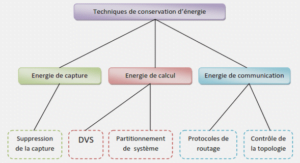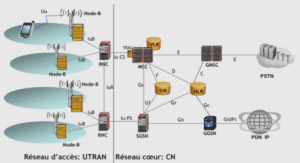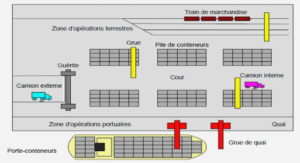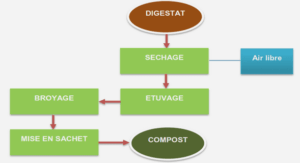Dans cette thèse, notre but est d’étudier des équations aux dérivées partielles (EDP) auxquelles nous introduisons l’aléatoire via une différentielle stochastique de type bruit blanc gaussien. En d’autres termes, l’aléatoire s’immisce dans l’EDP par le biais d’une intégrale stochastique, et se propage jusqu’à la solution qui est désormais un processus stochastique. On parle alors de perturbation stochastique, d’EDP bruitée, d’EDP stochastique ou encore de forçage aléatoire ou stochastique. L’étude de cette classe d’équations repose sur une théorie à la frontière entre l’analyse des EDP et les probabilités (calcul stochastique). L’enjeu dans ce travail étant, partant d’un bagage mathématique orienté analyse des EDP, d’adapter les techniques habituellement utilisées dans le cas déterministe (i.e. sans terme de probabilité) au cas des EDP stochastiques.
Former results
These classes of Barenblatt equations were originally considered by Barenblatt in [10]. In Kamin-Peletier-Vázquez [52], the authors establish the existence of self-similar solutions of a Barenblatt equation arising in porous media models. The existence of self-similar solutions for a class of quasilinear degenerate Barenblatt equations related to porous media problems were further investigated in Hulshof-Vázquez [50] and in Igbida [51]. Barenblatt type problems appear also in a wide variety of situations in Physics, Biology and Engineering. In particular, in Colli-Luterotti-Schimperna-Stefanelli [28] a pseudo-parabolic Barenblatt equation motivated by an irreversible phase change model is studied and in Ptashnyk [65] the analysis of similar kind of equations is used for reaction-diffusion with absorption problems in Biochemistry. In the context of constrained stratigraphic problems in Geology, the study of Barenblatt equations were recently revisited by different authors. In this regard, we can quote the contributions Antontsev-Gagneux-Luce Vallet [3], [4], [5], [6], Vallet [75] and for related problems with stochastic coefficients Adimurthi-Seam-Vallet [2]. Finally, in Díaz-Díaz [33] and in Ha [47] the existence of solutions to a class of homogeneous quasilinear Barenblatt equations is established by means of monotone methods for m-accretive operators. As far as we know, there has not been any publications on stochastic perturbations of these classes of Barenblatt equations. This subject is developed in the following study.
Former results
Many papers on parabolic stochastic problems can be found in the literature, but much less papers have been devoted to the study of stochastic perturbation of nonlinear first-order hyperbolic problems. Before 2008, most of them concern the Cauchy problem in the 1D case in the case of additive noise, except Holden-Risebro [49] where the authors have used an operator splitting method to prove the existence of a weak solution to the Cauchy problem. They considered a multiplicative noise with a compact support to get L∞ estimates and the convergence is obtained by using pathwise arguments.
E-Khanin-Mazel-Sinai [38] were interested in the invariant measures for the Burgers equation with additive noise. Existence and uniqueness of a stochastic entropy solution is proved thanks to a Hopf-Lax type formula for the corresponding stochastic Hamilton-Jacobi equation. Kim [53] proposed a method of compensated compactness to prove, via vanishing viscosity approximation, the existence of a stochastic weak entropy solution to the Cauchy problem. A Kruzhkov-type method was used to prove the uniqueness.
Vallet-Wittbold [78] proposed to extend the result of Kim to the multi-dimensional Dirichlet problem with additive noise. The formulation of the Dirichlet boundary condition was inspired by the approach of J. Carrillo which consists in formulating the boundary condition implicitly via global integral entropy inequalities involving semi Kruzhkov entropies. Using the vanishing viscosity method and Young measure techniques the authors proved the existence, and, via Kruzhkov doubling variables technique, the uniqueness of the stochastic entropy solution.
Concerning multiplicative noise, for the Cauchy problem, Feng-Nualart [41] introduced a notion of strong entropy solution in order to prove the uniqueness of the entropy solution. Using the vanishing viscosity and compensated compactness arguments, the authors established the existence of strong entropy solutions only in the 1D case. In the recent paper, Chen-Ding-Karlsen [27] proposed to revisit the work of Feng and Nualart. They proved that the multidimensional stochastic problem is well-posed by using a uniform spatial BV-bound. They proved the existence of strong stochastic entropy solutions in Lp ∩ BV and developed a “continuous dependence” theory for stochastic entropy solutions in BV, which can be used to derive an error estimate for the vanishing viscosity method.
|
Table des matières
General introduction
I On the Stochastic Barenblatt Equation
1 Introduction
1.1 Former results
1.2 Content of the study
1.3 Assumptions and main results
2 Study of the implicit time discretization
2.1 Existence of the approximate sequence
2.2 Notations and computations
2.3 A priori estimates
2.4 At the limit
3 Existence and uniqueness of the solution
3.1 Uniqueness
3.2 Existence
3.3 Multiplicative case
II On abstract Barenblatt equations
1 Introduction
1.1 Former results
1.2 Content of the study
1.3 Notations, assumptions and main results
2 The deterministic case
2.1 Existence of the approximate sequence
2.2 A priori estimates
2.3 At the limit
2.4 If A is linear
3 The stochastic case
3.1 The multiplicative case
III The Cauchy problem for a conservation law with a multiplicative stochastic perturbation
1 Introduction
1.1 Former results
1.2 Goal of the study
1.3 Plan of the study
1.4 Notations and functional setting
2 Entropy formulation
3 Existence of a measure-valued solution
4 Uniqueness
4.1 Local Kato inequality
4.1.1 Plan of the proof
4.1.2 Details of the proof
4.2 Uniqueness and stability
IV The Dirichlet problem for a conservation law with a multiplicative stochastic perturbation
1 Introduction
1.1 Former results
1.2 Goal of the study
1.3 Plan of the study
1.4 Notations and functional setting
2 Entropy formulation and existence of a measure-valued solution
3 Uniqueness
3.1 Plan of the proof
3.2 Details of the proof
3.2.1 Local Kato inequality (3.1)
3.2.2 Global Kato inequality (3.2)
3.3 Uniqueness and stability
V On a splitting method for a stochastic conservation law with Dirichlet boundary condition & numerical experiments
1 Introduction
1.1 Former results
1.2 Goal of the study
1.3 Notations
2 Existence and uniqueness result
3 Splitting method
3.1 Introduction
3.2 Construction of the approximate solution
3.3 Entropy formulation
3.4 Convergence of the approximate solution
4 Numerical experiments
![]() Télécharger le rapport complet
Télécharger le rapport complet






